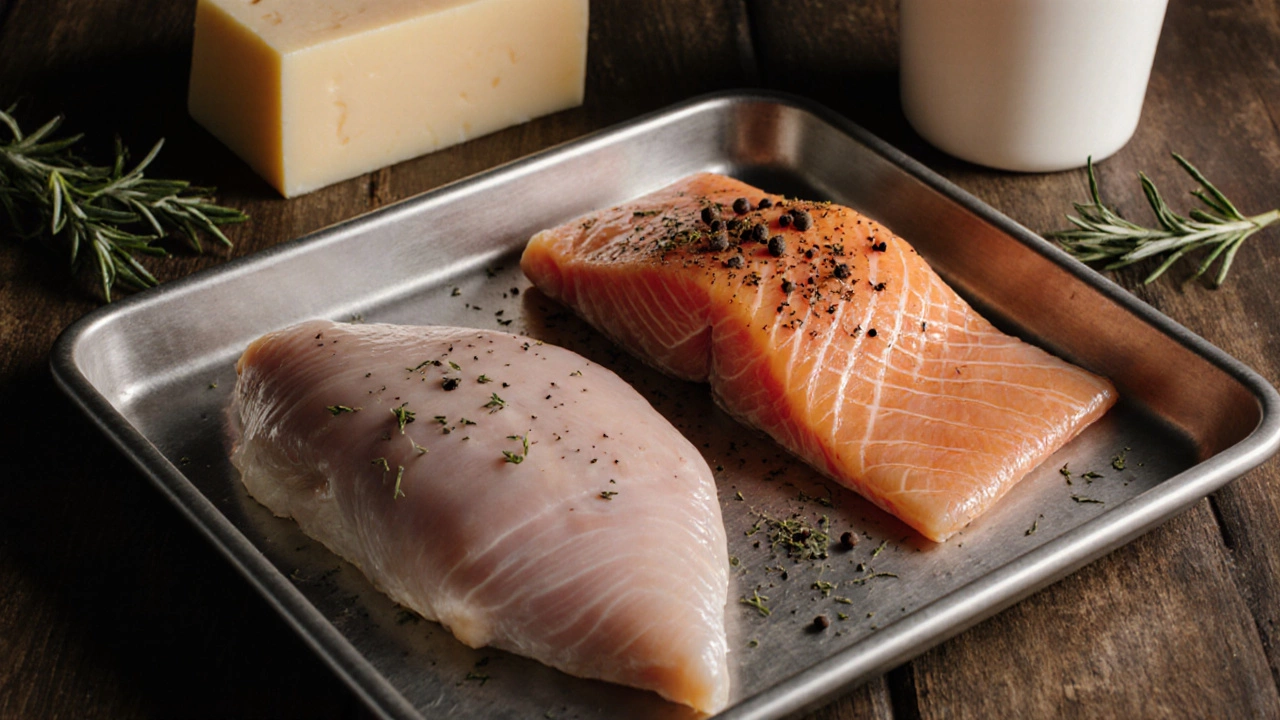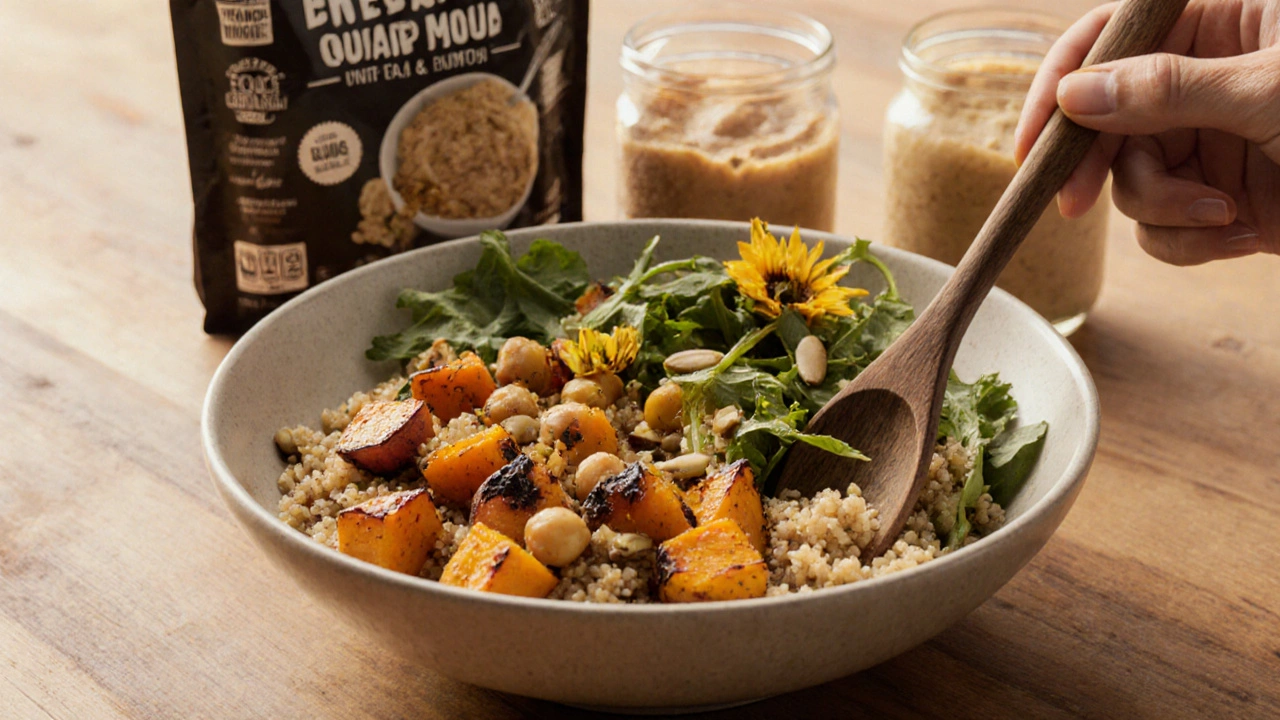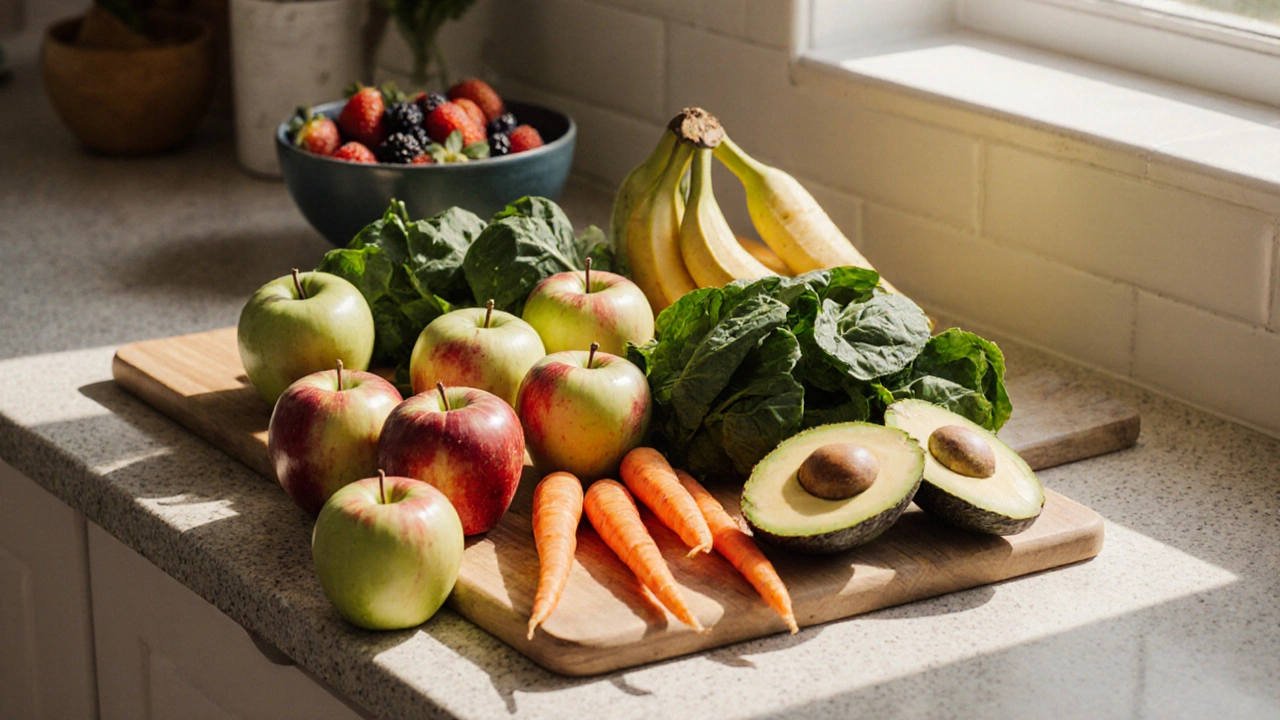If you have celiac disease, eating the wrong thing isn’t just uncomfortable-it can damage your gut, cause long-term health problems, and make you feel awful for days. The good news? There are plenty of foods you can eat without worry. You don’t need to live on lettuce and chicken breast. Real, satisfying, delicious food is out there-if you know what to look for.
1. Fresh Fruits and Vegetables
Everything that grows naturally in the ground is gluten-free. Apples, bananas, broccoli, spinach, carrots, peppers, berries, avocados-none of these contain gluten. They’re not just safe; they’re essential. People with celiac disease often have nutrient deficiencies because their intestines have been damaged. Eating a wide variety of fresh produce helps rebuild those nutrients. Keep it simple: grab a handful of grapes, slice up some cucumber, or roast sweet potatoes with olive oil and rosemary. No sauces, no seasonings unless they’re labeled gluten-free. Even some spice blends can hide gluten in anti-caking agents.
2. Unprocessed Meats and Fish
Chicken, beef, pork, lamb, turkey, salmon, tuna, cod-any fresh, unmarinated, unprocessed meat or fish is naturally gluten-free. The problem comes when it’s breaded, marinated, or injected with flavorings. A chicken breast from the butcher is fine. That pre-seasoned chicken strip from the freezer aisle? Not unless it says “gluten-free” on the label. Same with deli meats. Many use wheat starch as a filler. Always check the ingredients. If you see “modified food starch,” “maltodextrin,” or “hydrolyzed vegetable protein,” dig deeper. Some of these are gluten-free, but not all. When in doubt, stick to plain cuts and season them yourself with salt, pepper, garlic, and herbs.
3. Eggs
Eggs are one of the most reliable, affordable, and versatile foods on the planet. They’re packed with protein, healthy fats, and choline-a nutrient that helps repair gut lining. Hard-boiled, scrambled, poached, or baked into a frittata, eggs are safe as long as you’re not adding flour-based thickeners. Skip the pre-made quiches or egg bites from the store unless they’re labeled gluten-free. Many use wheat flour or breadcrumbs in the base. Make your own. It takes five minutes, and you know exactly what’s in it.
4. Dairy Products (Plain and Unflavored)
Milk, plain yogurt, hard cheeses like cheddar and Parmesan, and butter are naturally gluten-free. But flavored yogurts? Creamers? Processed cheeses? Those can contain hidden gluten. Some brands add malt flavoring (made from barley) or modified starches to thicken or sweeten. Stick to plain, unsweetened versions. If you like yogurt, buy plain Greek yogurt and add your own fruit and honey. For cheese, avoid shredded varieties that have anti-caking agents-those sometimes contain wheat starch. Grate your own from a block. It’s cheaper, tastes better, and you control the ingredients.

5. Gluten-Free Grains and Starches
This is where people get confused. Not all grains are bad. Rice, quinoa, buckwheat, millet, amaranth, sorghum, teff, and certified gluten-free oats are all safe. But here’s the catch: oats are often contaminated with wheat during farming or processing. Only buy oats labeled “certified gluten-free.” Regular oats? Skip them. Same with rice noodles, corn tortillas, and potato starch. These are great alternatives to wheat-based pasta and bread. Look for brands like Bob’s Red Mill, Enjoy Life, or Udi’s. They test their products for gluten contamination. A bowl of quinoa with roasted veggies and grilled chicken is just as filling as pasta-and way better for your gut.
6. Nuts, Seeds, and Legumes
Almonds, walnuts, sunflower seeds, chia seeds, flaxseeds, lentils, chickpeas, black beans, and peanuts are all naturally gluten-free. They’re also rich in fiber, protein, and healthy fats-exactly what your body needs after years of intestinal damage. Watch out for flavored nuts and trail mixes. Some are coated in malt vinegar, soy sauce (which contains wheat), or wheat-based seasonings. Stick to raw or dry-roasted nuts without added flavors. Hummus? Usually safe, but check the label. Some brands use wheat-based thickeners. Make your own with canned chickpeas, tahini, lemon juice, and garlic. It’s cheaper, tastier, and 100% gluten-free.
What to Avoid (Even If It Seems Safe)
Some foods trick you. Soy sauce? Usually contains wheat. Unless it’s tamari or labeled gluten-free, skip it. Malt vinegar? Made from barley. Brown rice syrup? Often made with barley enzymes. Some medications and supplements use gluten as a binder. Even lip balm and toothpaste can contain gluten-though it’s not absorbed through the skin, people with celiac disease sometimes react if they accidentally swallow it. Always read labels. If it’s not clearly labeled gluten-free, don’t risk it. Cross-contamination is real. A toaster used for regular bread can transfer gluten particles. Use a separate one. Same with cutting boards, utensils, and condiment jars. Shared peanut butter jars? Don’t use them if someone else has put a gluten-containing cracker in there.

Real-Life Tip: The Grocery Store Hack
Go to the perimeter of the store. That’s where the fresh food is-produce, meat, dairy, eggs. The middle aisles are where the packaged, processed stuff lives, and that’s where gluten hides. Stick to the edges, and you’ll be safe 90% of the time. When you do buy packaged food, look for the gluten-free certification logo. The GFCO (Gluten-Free Certification Organization) seal means the product has been tested and contains less than 10 parts per million of gluten-the safest standard. If you see that logo, you can relax.
What Happens If You Accidentally Eat Gluten?
It varies. Some people get bloating and diarrhea within hours. Others feel tired, foggy, or get joint pain days later. The damage to the gut lining happens even if you don’t feel symptoms. That’s why sticking to the list matters. One bite won’t kill you, but repeated exposure leads to long-term risks: osteoporosis, anemia, neurological issues, and even certain cancers. That’s why it’s not just a diet-it’s a medical necessity.
Can celiacs eat oats?
Only if they’re labeled “certified gluten-free.” Regular oats are almost always contaminated with wheat, barley, or rye during farming or processing. Certified gluten-free oats are grown and processed in dedicated facilities to avoid cross-contamination. Even then, some people with celiac disease still react to oats, so start with small amounts and monitor how you feel.
Is all cheese gluten-free?
Plain, unprocessed cheeses like cheddar, mozzarella, Swiss, and Parmesan are gluten-free. But shredded cheeses often have anti-caking agents that may contain wheat starch. Processed cheeses, cheese spreads, and flavored cheeses (like garlic & herb) sometimes include gluten as a thickener. Always check the label. When in doubt, buy a block and grate it yourself.
Can celiacs eat rice?
Yes, all plain rice-white, brown, wild, basmati-is naturally gluten-free. But avoid flavored rice mixes unless they’re labeled gluten-free. Many contain soy sauce, seasoning blends, or wheat-based thickeners. Stick to plain rice and add your own herbs, spices, or broth for flavor.
Is gluten-free food healthier?
Not necessarily. Many gluten-free packaged foods are loaded with sugar, fat, and refined starches to mimic the texture of wheat products. A gluten-free cookie is still a cookie. The healthiest gluten-free diet focuses on whole, unprocessed foods-fruits, vegetables, lean proteins, legumes, and certified gluten-free whole grains. Avoid replacing wheat with processed gluten-free junk.
How do I know if a product is truly gluten-free?
Look for a certified gluten-free label from organizations like GFCO or NSF. These mean the product has been tested and contains less than 10 parts per million of gluten. If there’s no certification, read the ingredient list carefully. Avoid anything with wheat, barley, rye, malt, or modified food starch unless it’s specified as gluten-free. When in doubt, contact the manufacturer.
Start Simple, Stay Consistent
You don’t need to overhaul your whole life overnight. Pick one meal a day-say, breakfast-and make it 100% gluten-free. Eggs with spinach and avocado. Then add lunch. Then dinner. Over time, it becomes second nature. Keep a list of safe foods on your phone. Bookmark a few trusted brands. Cook in batches. Label your containers. You’ll find that eating gluten-free isn’t about restriction-it’s about discovering what real, clean food actually tastes like.

